Antimicrobial Resistance Debate Reaches Live Export Trade
In what some in the industry have called a smear campaign, former live export veterinarian Dr Lynn Simpson has plunged the industry into the antimicrobial resistance debate.
Globally, about 700 000 deaths are attributed to antimicrobial resistance (AMR) each year. While the discovery of antibiotics meant that previously lethal infections could be cured and surgical procedures made safer, the rise of AMR is leading to a “post-antibiotic era” where common infections may once again be fatal.
That is according to the 2016 OECD report Antimicrobial Resistance: Policy Insights. “The misuse of antibiotics in the medical, veterinary and agricultural sectors, which include the inappropriate prescribing of antibiotics, their overuse in the livestock sector and insufficient hygiene practices in hospital, all contribute to the rise of AMR. Global trade and travel are also accelerating the spread.”
An open letter released in May and signed by over 200 scientists and policy experts calls for action on the AMR risks associated with factory farming. The letter states an increasing body of evidence suggests that antibiotic use in factory farming is a major contributor to resistance.
Last month, Simpson wrote to Israel's Minister of Agriculture and Minister of Health highlighting her concerns about AMR in the context of the live export trade. Her reasoning was essentially that live export ships are another form of factory farming, as they are simply floating feedlots.
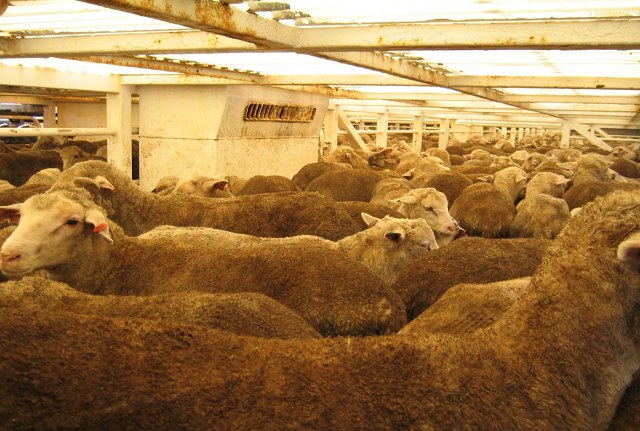
Credit: Lynn Simpson
Simpson writes: “Animals tend to get stressed in the overcrowded, unhygienic environment of the ships used for export. As such many animals will develop illnesses. These illnesses must be treated during the voyage to reduce disease spread and death rates.
“Unfortunately the ships provide an added risk of inappropriate use of antimicrobial medications, hence increased risk of AMR development. This is due to medications being administered to the animals by stockmen without veterinary qualifications, and by Veterinarians such as myself, due to the lack of diagnostic facilities on the ships. This results in guesswork with medication: further increasing AMR development...
“The poor hygiene on the ships results in the crew being unable to record which animals are medicated and how many animals have ingested secondary doses of medication from the sewerage contamination consumed via water/ feed troughs as well as self cleaning themselves with their tongues. The lack of recording animal identification results in animals being consumed before the medication may have cleared their systems, this is called a withholding period (WHP).
“WHP’s are crucial in the ‘meat’ processing industry worldwide to provide a high level of confidence that drug consumption and AMR development risks are minimized.”
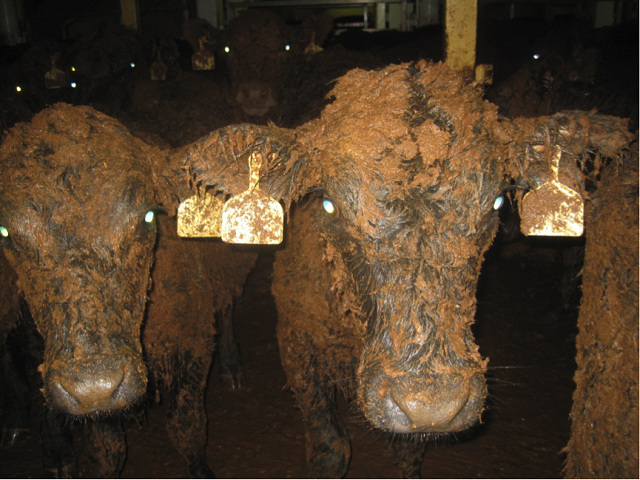
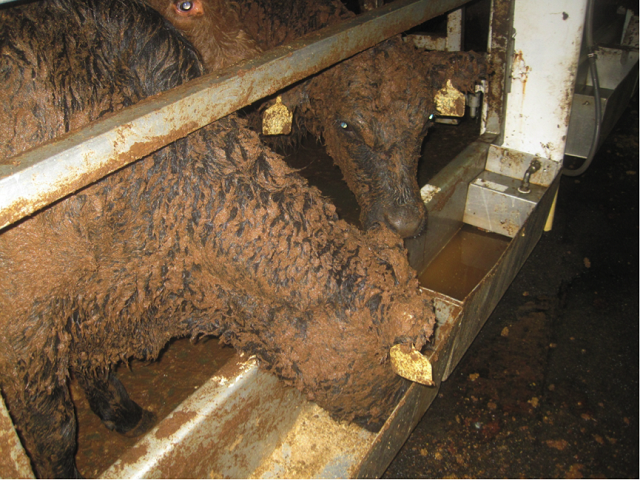 Credit: Lynn Simpson
Credit: Lynn Simpson
Simpson believes that the recording of treatments to animals is logistically unfeasible, as, after several days at sea, it is no longer possible to read most ear tags completely. She says it should be assumed by importing countries that all animal must not be processed for human consumption until after the longest WHP of the drugs on board.
“In the case of animals imported from Australia, the Exporter Supply Chain Assurance System (ESCAS) policy in place should provide a reliable trace-back mechanism of each individual animal from the time of arrival into a country to the time of slaughter, thus allowing assessment of whether likely maximum WHP’s are observed.”
Scott Weathers, co-author of the open letter signed by over 200 people (not Simpson's letter), and graduate student in public health at Harvard University, read Simpson's letter and had this to say: "While I have not seen any evidence on the spread of antibiotic resistance in cross-ocean shipping, evidence from land shipping and our knowledge about poor conditions on some ships indicates that it may be a plausible pathway for spreading antibiotic resistance."
Weathers refers to an article in Scientific American to support his view. The article states:
“Recent research shows that segments of DNA conferring drug resistance can jump between different species and strains of bacteria with disturbing ease, an alarming discovery. By simply driving behind chicken transport trucks, scientists collected drug-resistant microbes from the air within their cars.
“Many researchers worry - and the new findings add fresh urgency to their concerns - that the abundant use of antibiotics on farms is unraveling our ability to cure bacterial infections. This latest research, scientists now say, shows resistance to drugs can spread more widely than previously thought and firms up links in the resistance chain leading from animal farm to human table.
“In 2014 pharmaceutical companies sold nearly 21 million pounds of medically important antibiotics for use in food animals, more than three times the amount sold for use in people.”
The Scientific American article also says that the farm industry believes concerns are wildly overblown and cites Richard Carnevale, vice president of regulatory, scientific and international affairs at the Animal Health Institute, a trade group that represents veterinary pharmaceutical companies.
The article states the view that researchers have not directly shown that farm antibiotic use is sparking more resistant infections in people. Many of the drug-resistant infections circulating in today's hospitals have never been linked to farms or animal meat.
“Scientists now counter that the farm industry is the one exaggerating – even engineering – scientific uncertainty to protect their interests,” states the article. “Frankly, it reminds me of the tobacco industry, the asbestos industry and the oil industry,” says James Johnson, an infectious disease physician at the University of Minnesota who studies antibiotic-resistant pathogens. “We have a long history of industries subverting public health.” He and other researchers admit that it is difficult to connect all the dots, but the farm industry, they say, deliberately makes it harder.
“Some big meat companies instruct their farmers to keep researchers away, arguing they need to keep animals free of outsiders and their diseases, which makes it impossible for scientists to solidify the science.”
In response to Simpson's letter, the Australian Livestock Exporters' Council has this to say: “The most experienced and knowledgeable livestock industry veterinarians have repeatedly rejected suggestions that Australian livestock pose any public health threats because such suggestions are not supported by any scientific evidence.
“Australia’s entire red meat industry is committed to upholding the integrity of veterinary drug use systems, to both underpin the world’s best animal welfare practices and protect the enviable food safety status of meat derived from Australian livestock.”
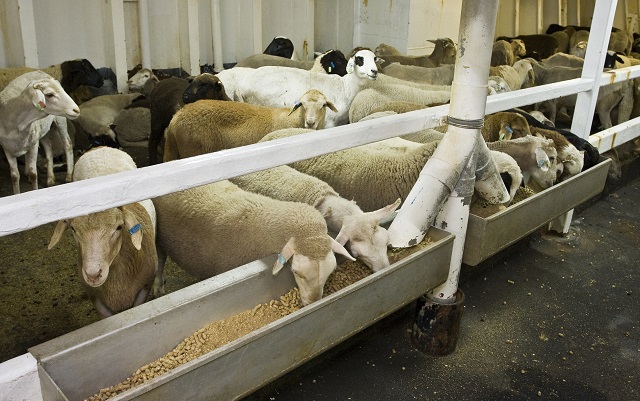 Credit: Australian Livestock Exporters’ Council
Credit: Australian Livestock Exporters’ Council
However, Simpson's letter has already been taken up by those opposing live export. Anat Refua, Israel Against Live Shipments spokesperson, says: "Having seen the state of the animals that arrive to Israel, we are extremely concerned for the welfare of the Israeli public, as well as for that of the animals.
“We feel that our Israeli government is taking very lightly the health risk here. Whether this is due to carelessness or due to the very strong pressure on the live cattle and sheep importers to keep subsidizing the trade, this is unclear. What is for sure is that the Israeli public will be affected earlier or later by these decisions, or lack thereof."
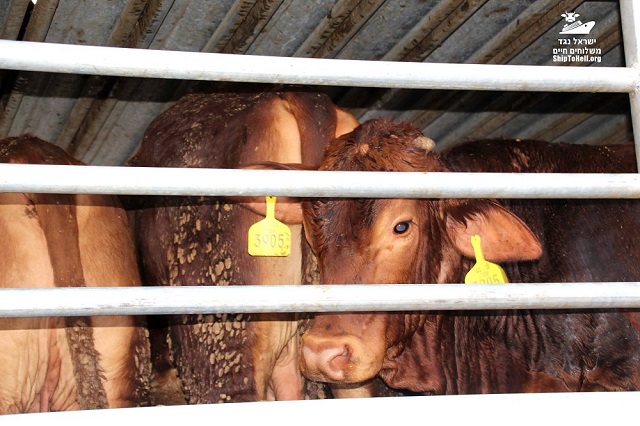 Credit: Israel Against Live Shipments
Credit: Israel Against Live Shipments
The scientific community continues to discuss the issue. A leading expert in the field, Dr Ramanan Laxminarayan of Princeton University and the Center for Disease Dynamics, Economics and Policy, recently co-authored a paper that presents the first global map of antibiotic consumption in livestock and conservatively estimate the total consumption in 2010 at 63,151 tons and estimating an increase to 105,596 tons by 2030.
In low- and middle-income countries, rising incomes have driven an unprecedented growth in demand for animal protein and, as a result, the global biomass of animals raised for food now exceeds the global biomass of humans. To meet growing demand, countries such as Brazil, Russia, India, China and South Africa have shifted toward factory farms.
“Because these production systems necessitate antimicrobials to keep animals healthy and maintain productivity, rising incomes in transitioning countries are effectively driving an increase in antimicrobial consumption and thereby antimicrobial resistance,” states the paper.
“The challenges of the nutritional transition to animal protein-based diets and the rise of antimicrobial resistance are thus closely linked.”
The opinions expressed herein are the author's and not necessarily those of The Maritime Executive.
